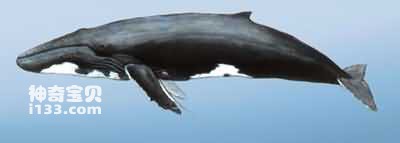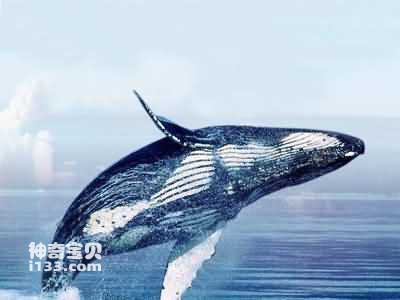Humpback whale aliases: big-winged whale, humpback whale, saw-armed whale. The body is hypertrophic, with a broad upper trunk. There are tumor-like protrusions along the central line from the breathing hole to the tip of the snout, as well as on both sides of the upper and lower whiskers. The dorsal fin is relatively small, located at 2/3 of the body length behind the body. The flippers are very large, about 1/3 of the body length, and are the largest among cetaceans. Their front edges have irregular, jagged knobs. The tail fin is wide and the outer edge is also irregularly toothed. There are few facial folds, about 14p to 35, extending from the lower part to the navel. The back is black with black markings, and the belly is black or bright. The individual body parts vary greatly, and the white part above the flippers is more than the black part, making it square white. The ventral surface of the tail fin is white and the edge is black. There are 270 to 400 pieces of baleen on each side, and the baleen plates and baleen hairs are all black and gray.

The average adult body length is 12.9 meters for males and 13.7 meters for females, and weighs 25 to 35 tons. The maximum recorded body length for females is 18 meters.
The groups are not large and usually travel in pairs. Swimming speed is slower. The fog column evoked when breathing is thick and short, 4 to 5 meters high. When diving deeply, its huge tail fin is exposed, and it often jumps out of the water or turns sideways with one flipper raised. Regular north-south swimming tours are conducted every year.
The staple food is small crustaceans and small fish swimming in schools.
It is distributed in the Yellow Sea, East China Sea, and South China Sea in my country.

animal tags:
We created this article in conjunction with AI technology, then made sure it was fact-checked and edited by a Animals Top editor.